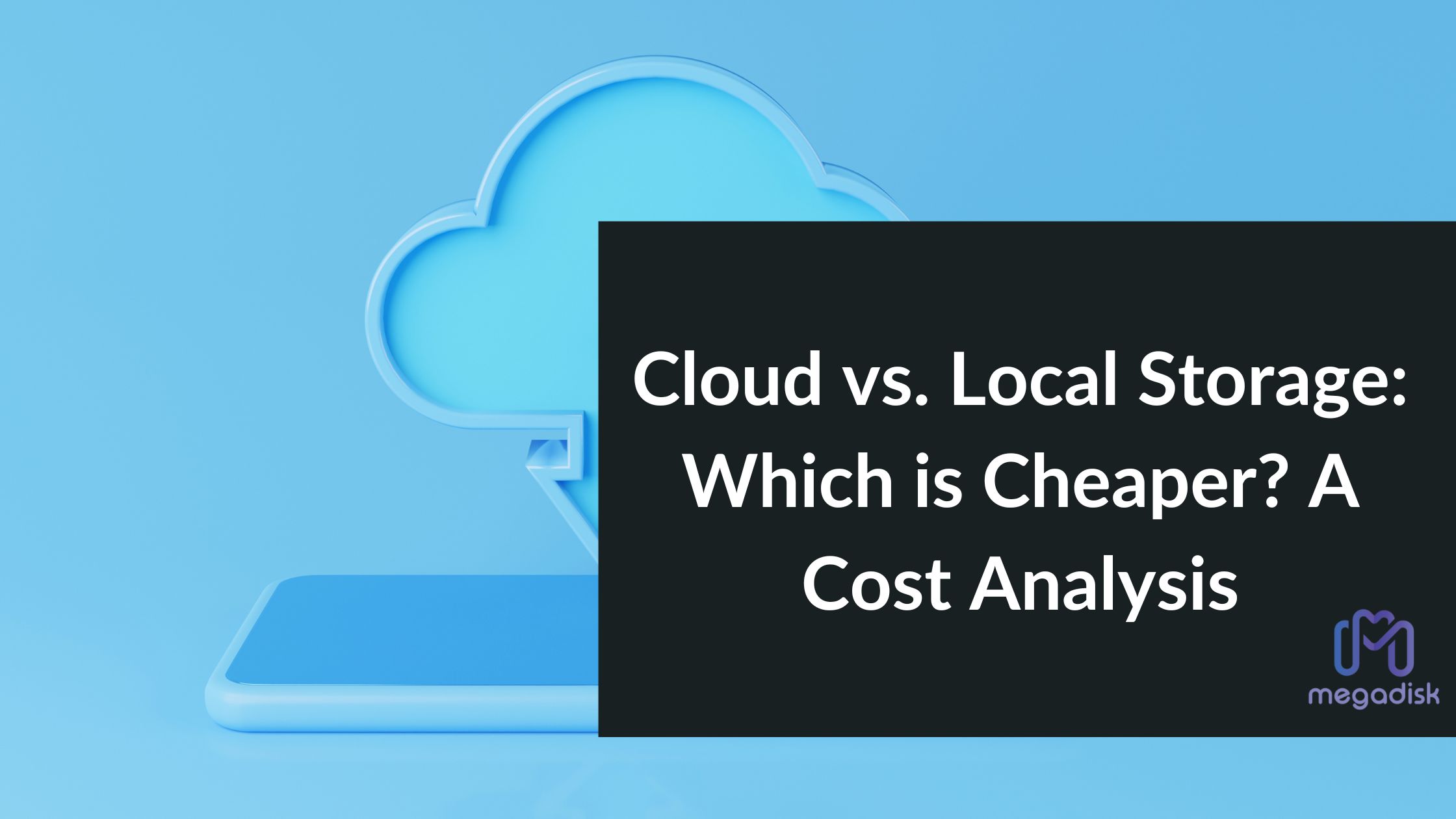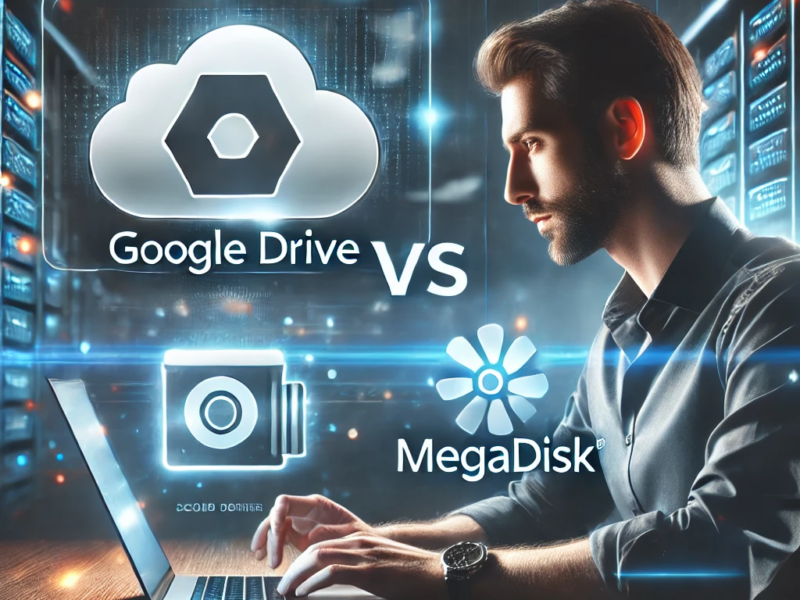In today’s data-driven world, businesses and individuals alike are grappling with the challenge of storing and managing an ever-increasing volume of digital information. As technology continues to evolve, the debate between cloud storage vs. local storage has intensified, with cost being a critical factor in the decision-making process.
In this comprehensive cost analysis, we’ll delve deep into the nuances of both storage solutions, exploring their respective advantages, drawbacks, and long-term financial implications.
Understanding Cloud Storage Costs
Cloud storage services, such as Megadisk, Google Drive, Dropbox, and Amazon S3, offer a convenient and scalable solution for storing and accessing data remotely. These services typically charge based on the amount of data stored, with pricing models varying from provider to provider.
Subscription Fees
Many cloud storage providers offer monthly or annual subscription plans with varying storage capacities and pricing tiers. These plans often start with a free tier offering limited storage space and progressively increase in cost for larger storage capacities.
Pay-as-you-go Pricing
Some cloud storage services, particularly those geared towards businesses, offer pay-as-you-go pricing models. In this approach, users are charged based on the actual amount of data stored, with rates varying depending on factors such as data redundancy, geographic location, and access frequency.
Data Transfer Costs
In addition to storage costs, cloud providers may also charge for data transfer, including uploading and downloading files from the cloud. These charges can vary based on factors such as bandwidth usage and data transfer location.
Hidden Costs
While the upfront costs of cloud storage may seem attractive, it’s essential to consider potential hidden costs, such as data retrieval fees, early termination charges, and costs associated with migrating data between cloud services or back to local storage.
Evaluating Local Storage Costs
Local storage, which involves storing data on physical devices such as hard drives, solid-state drives (SSDs), or network-attached storage (NAS) devices, has its own set of cost considerations.
Hardware Costs
The initial investment in purchasing local storage hardware, such as hard drives or NAS devices, can be substantial. However, these costs are often one-time expenses, and the hardware can be reused or upgraded as needed.
Power and Cooling Costs
Local storage solutions require power to operate and generate heat, which can increase energy costs and potentially necessitate additional cooling measures, particularly in data centers or enterprise environments.
Maintenance and Replacement Costs
While local storage hardware can be reused, it has a finite lifespan and may require periodic maintenance, repairs, or replacements, incurring additional costs over time.
Data Backup and Redundancy
Ensuring data redundancy and implementing robust backup solutions for local storage can add to the overall cost, as it may require additional hardware, software, and off-site storage solutions.
Scalability and Flexibility
One of the advantages of cloud storage is its scalability, allowing users to easily increase or decrease storage capacity as needed. Local storage, on the other hand, may require investing in additional hardware to accommodate growing storage needs, which can be costly and time-consuming.
Cost Comparison: Cloud vs. Local Storage
To determine which storage solution is more cost-effective, it’s crucial to consider the specific needs and usage patterns of the user or organization. Here are some key factors to consider:
To determine which storage solution is more cost-effective, it’s crucial to consider the specific needs and usage patterns of the user or organization. Here’s a comparison of the key cost factors for cloud and local storage:
| Cost Factor | Cloud Storage | Local Storage |
|---|---|---|
| Initial Investment | Low (subscription or pay-as-you-go) | High (hardware purchase) |
| Ongoing Storage Costs | Based on data volume and pricing plans | One-time hardware cost |
| Data Transfer Costs | Charges for uploading/downloading data | No transfer costs (local access) |
| Maintenance & Replacement | Included in service | Hardware maintenance and replacement costs |
| Scalability | Highly scalable (pay for what you use) | Requires additional hardware investment |
| Data Redundancy & Backup | Often included in service | Additional hardware/software costs |
| Geographic Distribution | Cost-effective for distributed access | Requires data replication across locations |
| Energy & Cooling | Included in service | Additional costs for power and cooling |
As illustrated in the table, cloud storage offers a lower initial investment and scalable costs based on usage, while local storage requires a higher upfront hardware investment but may be more cost-effective for larger, static data volumes. Data transfer, maintenance, and redundancy costs can also impact the overall cost equation for each solution.
Let’s look at these factors in detail.
Data Volume
For small to medium-sized data volumes, cloud storage can be more cost-effective, especially when factoring in the hardware, maintenance, and energy costs associated with local storage. However, for larger data volumes, local storage may become more economical in the long run, particularly if the data is relatively static and infrequently accessed.
Data Access and Transfer
If data needs to be frequently accessed or transferred, cloud storage may be more cost-effective due to the inherent accessibility and bandwidth advantages. However, if data transfer is minimal and access is primarily local, local storage could be more cost-efficient.
Scalability Requirements
If storage needs are expected to grow rapidly or fluctuate significantly, cloud storage’s scalability can provide a cost advantage by allowing users to pay only for the storage they need at any given time.
Data Redundancy and Backup
Cloud storage providers typically offer built-in data redundancy and backup solutions, which can be more cost-effective than implementing and maintaining similar solutions for local storage, particularly for smaller organizations or individuals.
Geographic Distribution
For organizations with geographically distributed teams or clients, cloud storage can be more cost-effective by eliminating the need for costly data replication and synchronization across multiple locations.
Hybrid Approach
In some cases, a hybrid approach combining both cloud and local storage may be the most cost-effective solution. This approach allows organizations to leverage the strengths of each storage solution while balancing cost considerations based on their specific data requirements.
Long-term Cost Considerations
When evaluating the long-term costs of cloud versus local storage, it’s essential to consider factors such as data growth rates, technology advancements, and the potential for cost reductions or increases in either storage solution over time.
Conclusion
The choice between cloud storage and local storage ultimately depends on various factors, including data volume, access patterns, scalability requirements, and long-term cost projections. While cloud storage can offer cost advantages for smaller data volumes and frequent access, local storage may be more economical for larger, static data sets and infrequent access.
It’s crucial to conduct a thorough cost analysis tailored to your specific needs and usage patterns, considering factors such as data growth, redundancy requirements, and geographic distribution. In some cases, a hybrid approach combining both cloud and local storage may offer the most cost-effective and flexible solution.
Ultimately, the decision between cloud storage vs. local storage should be driven by a careful evaluation of the total cost of ownership (TCO) over the desired time frame. Factoring in both upfront and ongoing costs associated with each storage solution.


